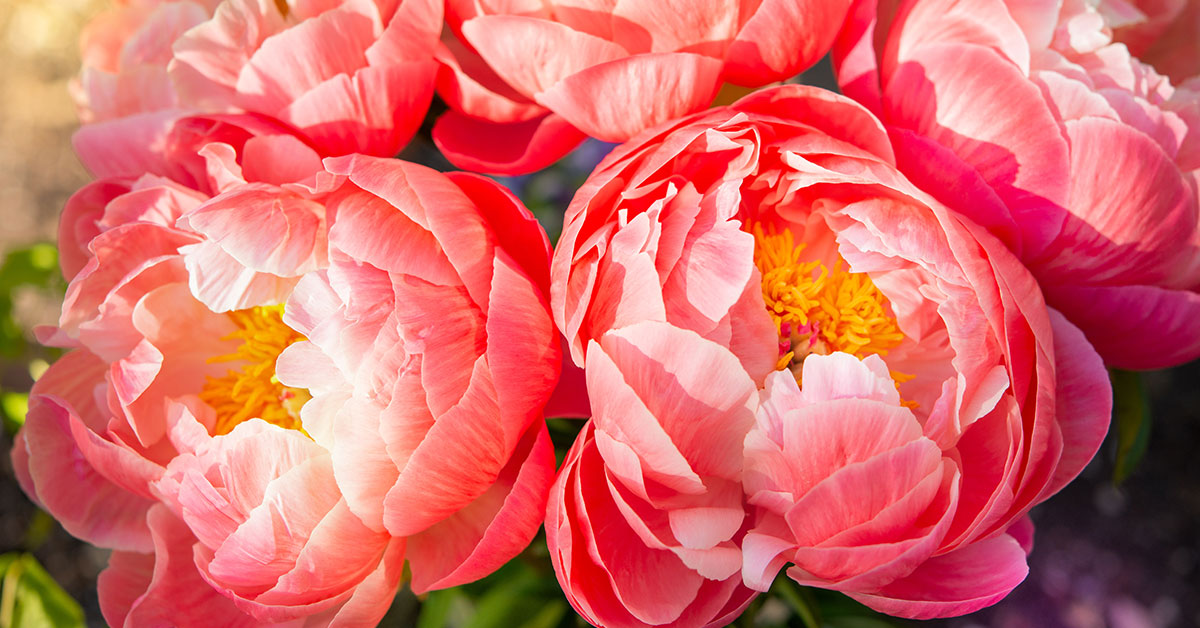When it comes to gardening, I love perennials. You plant them once and they just keep coming back year after year. Everywhere I’ve ever lived and gardened, there is one plant that for sure has a place in my perennial garden: the peony.
I live in a warmer growing zone here in western Oregon, and my peonies really are a plant-and-forget flower for me. They start to come up in March, flower by May, and don’t really require any additional, special care from me. That’s my kind of flower! In this article, we’re going to go over everything you need to know about growing and caring for peony flowers.
Read more: These 22 perennials will thrive in your garden for decades
Growing Peony flowers
Before planting a new flower in your garden, it’s best to get a crash course primer on the plant’s basics. Here’s what you ought to know about the peony:
- Latin name: Paeonia
- Native to: Asia
- Invasiveness: Not invasive
- Tenderness: Perennial
- Sun: Full sun
- Water: 1 inch per week
- Soil: Well-drained, slightly acidic soil (6.5-7.0 pH)
- Hardiness zone: 3-8
- When to plant: Autumn or spring
- Spacing: 2 feet
- Plant height: 3-4 feet
- Bloom period: April-June
- Time to maturity: 3-4 years
- Lifespan: 100+ years
- Container friendly: In warmer growing zones
- Fertilizer: 4-3-2, organic rose fertilizer is best
- Toxicity: Toxic to humans and pets
- Deer resistant: Yes
- Pest resistant: Somewhat
Peonies are a non-invasive perennial flower native to Asia. The peony flower requires full sun and about an inch of water given per week, especially during hot, dry summers. It does best in a well-drained, slightly acidic soil with a pH of around 6.5 to 7.0. Really, it isn’t terribly picky about soil.
Peony flowers are best planted either in autumn or early in spring, spaced 2 feet apart from one another. They take about 3 to 4 years to fully mature, but once mature and established will grow as tall as 4 feet. Once planted and established, your peonies will be a lifelong delight – they are known to live up to 100 or more years. They will dazzle you with bright, colorful flowers, especially if provided a standard organic rose fertilizer.
Peonies are resistant to both deer and pests, but a word of caution: they are toxic to both humans and animals. Don’t plant them anywhere where they could be consumed by a pet or child.
Water
Peony flowers are pretty easy to care for and don’t require a ton of water, especially once established. If you have hot, dry summers, do your best to provide about one inch of water per week. Rainy climates allow for less frequent watering. Watch for signs of failure to thrive and wilting.
Sunlight
Peonies are a full sunlight plant, requiring at least 6-8 hours of direct sunlight every day. Peonies that get less sunlight may not grow to their full potential and flower. Give them lots of sun!
Soil
Peonies do best in well-drained, slightly acidic soil with a pH of around 6.5 to 7.0. Really, it isn’t terribly picky about soil, you can get away with a lot. I’ve planted peonies in all types of soil and have never experienced any difficulties with getting them to grow, flower, and come back every year.
Fertilizing
I don’t often fertilize my peonies, aside from the rabbit manure and mulch I periodically throw haphazardly around my garden. If you find your peony flowers just aren’t doing that well or aren’t producing to your expectations, provide a standard 4-3-2 rose or flowering shrub fertilizer.
Invasiveness
Peonies are native to Asia. If you’re outside of a plant’s native range, it’s best to plant with extreme caution. That said, peonies are not known to be invasive. You can comfortably plant these without concern.
Growing Peony flowers in containers
Peonies don’t do all that well in containers if you live in colder climates. These plants grow from a bulb that can become damaged if the soil goes through an especially hard freeze, which potted soil is prone to doing. In warmer growing zones, you won’t likely experience this issue. But do take care that the soil in your pot doesn’t freeze solid.
Propagating Peonies
Peonies are easy to propagate through a process called division. In the autumn, prune back dead foliage and uproot the peony plant with a shovel or garden fork. Use a clean knife to cut sections off of the plant’s crown. Do your best to keep at least three buds and as much root ball as you can. Replant these cut sections approximately 2 feet apart from one another.
Uses for Peony flowers
Peonies have uses rooted in Traditional Chinese Medicine, but it is our recommendation to use these plants for aesthetic purposes only and leave the healing to those with advanced educations.
History of Peonies
The name “peony” is a bit of a mystery. One theory is that it originates from the Greek word Paeon. Paeon, according to Greek mythology, was the physician to the gods. Even gods needed a doctor back in those dates! Paeon angered his teacher, Asclepius, after he used the root of a peony to cure Plato. Asclepius, who was the god of medicine and healing, planned to kill Paeon, but Zeus spared his life by turning him into a peony.
There are many tales as to how the Peony got its name. According to one tale the name originates from the Greek word Paeon.
A second myth states that the plant is named after Paeonia, whose beauty was noticed by Apollo. Aphrodite, out of anger and jealousy, turned Paeonia into a peony.
Peonies have been cultivated in China since 1000 BC and were used in traditional Chinese medicine. The flower was first brought to Europe in the 1800s and is now very popular among gardeners around the world.













